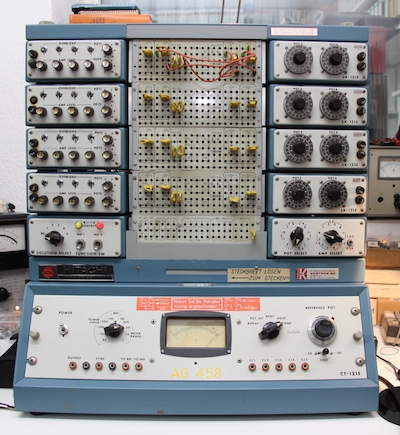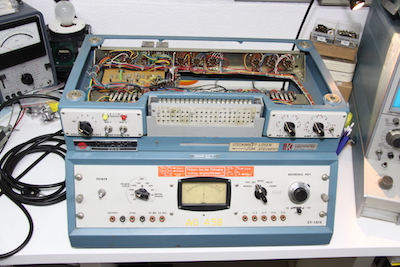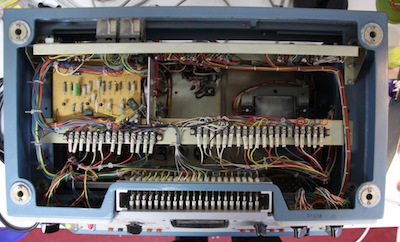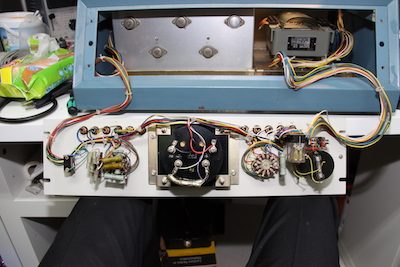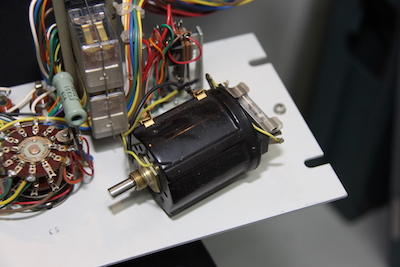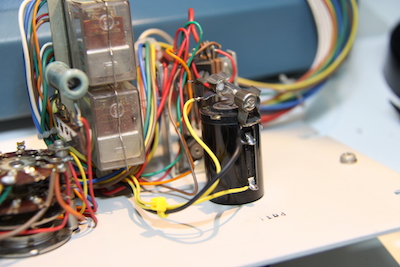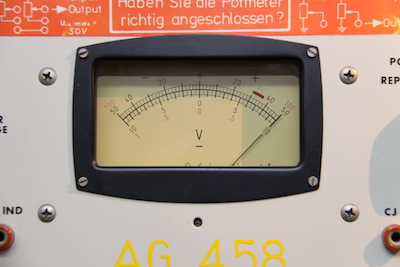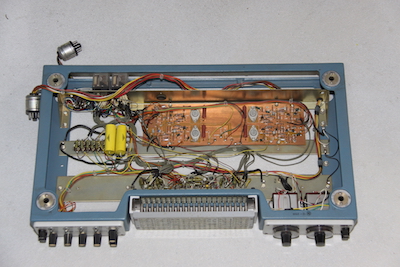Hitachi 303e
|
In December 2016, I got a mail from Rudolf Zimmermann from Switzerland who told me that he had an extremely rare Hitachi 303e table top analog computer that he would like to donate to the analogmuseum.org. Accordingly, my wife and I made a "short" trip to switzerland to take this beautiful machine under our wings.
|
|
|
The machine is a real beauty. It consists of a number of modules that are stacked vertically with the power supply and control panel at the bottom, followed by a basis module which contains the necessary switches to select all of the computer's amplifiers for readout. These two bottom modules are shown in the pictures above. The control panel on the bottom allows one to check all of the machine voltages, to control the mode of operation of the integrators and contains a precision reference potentiometer which is used in conjunction with the large meter to accurately adjust the coefficient potentiometers used in an actual computer setup. |
|
|
The two pictures above show the wiring side of the control panel. On the right is the precision potentiometer that was stuck and not repairable. Interesting is the fuse mounted on the back of this potentiometer to protect it from overcurrent which could result from patching errors. |
|
|
The picture above on the left shows the replacement potentiometer (also using a fuse for protection - an alternative would have been an incandescent light as used by Telefunken e.g.). Fortunately, everything else was just in pristine condition. Even the power supply works perfectly and the capacitors have not lost their capacitance. The picture on the right shows the check of the +100 V supply line. |
|
|
The top of one of the four computing modules is shown on the left. It contains four DC coupled amplifiers of which can be used as summers or as integrators (only two can be used as integrators). These amplifiers are extremely simple and do not feature any drift compensation so they have to be adjusted by means of small potentiometers accessible on the front panel after allowing the computer to warm up. The machine unit of this analog computer is quite remarkable - although it is fully transistorized, it features a machine unit of +/- 50 V (and the power transistors with their associated power resistors get quite hot during normal operation). Connection of these computing modules with the basis module and power supply are made by means of the cables visible in the upper left corner of the picture. |
|
|
This machine is a real marvel - not only is it the only Hitachi 303e I know about, but it is a wonderful example of Japanese engineering. The modular approach is quite ingenious, and its operation is very intuitive. I would like to thank Mr. Zimmermann again for this donation. |
|
|
22-MAR-2017, ulmann@analogmuseum.org |
|
